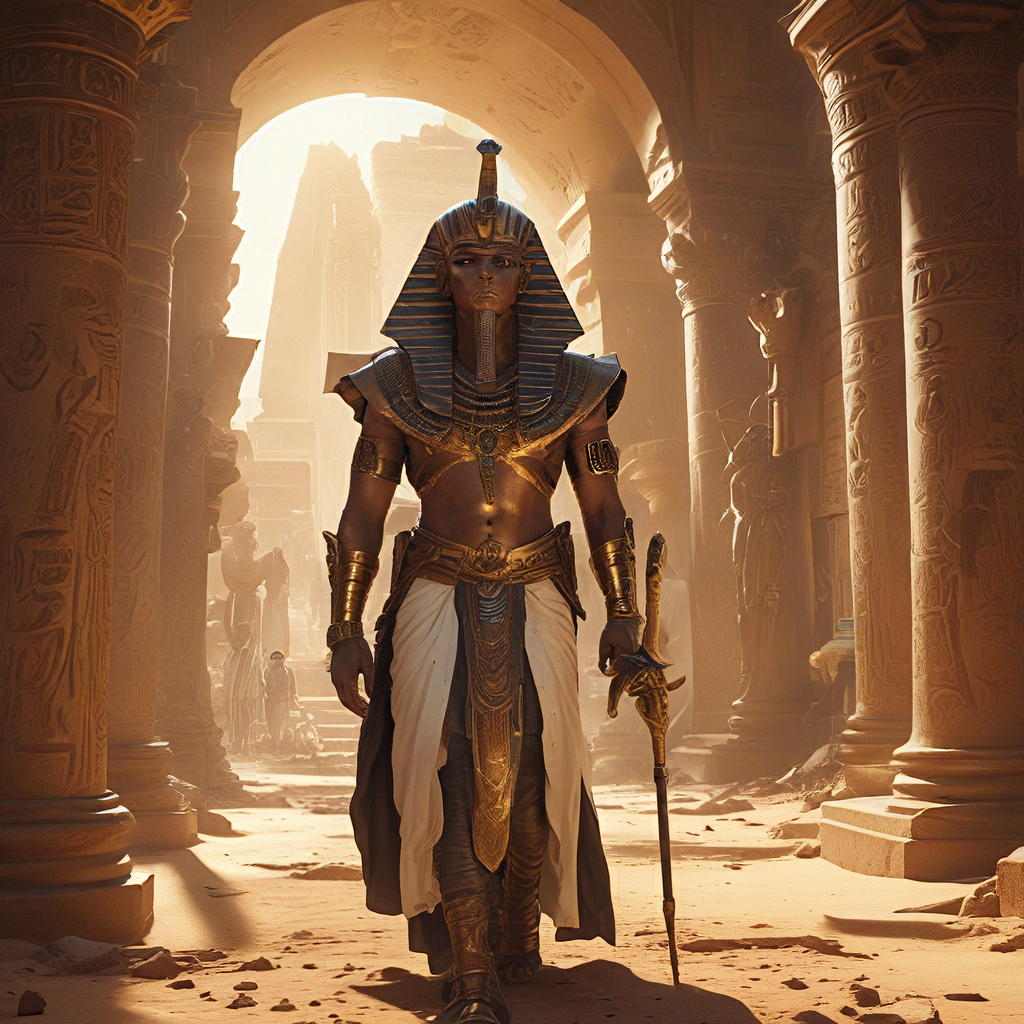The Egyptian Afterlife: A Journey to the Kingdom of Osiris
1. Introduction: The Significance of the Afterlife
Ancient Egyptians held a deep belief in an eternal existence beyond the physical world. The afterlife, known as “duat,” was a central part of their lives, influencing their actions, beliefs, and even their daily routines. They believed that the soul, or “ka,” would continue to exist after death, and its journey to the afterlife was a paramount concern. The pharaoh, as the divine ruler, was believed to have a special role in ensuring the well-being of the deceased and their passage into the afterlife.
2. Death: A Transition to the Next World
When an Egyptian died, a complex process called mummification was performed to preserve the body. This was believed to be essential for ensuring the “ka” could return to the body in the afterlife. The deceased were buried with elaborate burial goods, including food, jewelry, and even furniture, to help them in the next life. The Egyptian belief in the “ka” and the “ba” (the personality or soul) played a significant role in their understanding of the afterlife. The “ka” was considered the vital force that inhabited the body, while the “ba” could travel freely.
3. The Weighing of the Heart
After death, the deceased began a journey through the underworld, guided by the jackal-headed god Anubis. They ultimately arrived at the Hall of Maat, where Anubis weighed their hearts against a feather representing truth and justice, symbolized by the goddess Maat. The heart represented the individual’s moral character and actions in life. If the heart balanced with the feather, the deceased was deemed worthy to continue their journey to the afterlife. However, if the heart was heavier, the deceased would be devoured by the monster Ammit, a creature with the head of a crocodile, the body of a lion, and the paws of a hippopotamus, representing the forces of chaos and destruction.
4. The Judgment of Osiris
After the Weighing of the Heart, the deceased faced the judgment of Osiris, the god of the underworld. Osiris, who was resurrected after being murdered by his brother Seth, was believed to be the ultimate judge of the dead. He would question the deceased about their actions in life, seeking to determine whether they had lived a moral and righteous life. The answers to these questions would determine the individual’s fate in the afterlife.
5. The Trials of the Afterlife
The journey through the underworld was fraught with challenges. The deceased had to navigate through perilous landscapes filled with various mythical creatures and deities. They faced tests of character, knowledge, and courage, such as the trials of the scorpion goddess Serket, the serpent god Apophis, and the crocodile god Sobek. Surviving these trials was seen as a testament to the individual’s strength and virtue.
6. The Fields of Aaru: The Eternal Paradise
For those who successfully navigated the underworld and passed the judgment of Osiris, the reward was eternal bliss in the Fields of Aaru, a paradise filled with endless bounty and joy. It was a land of perpetual sunshine, fertile crops, and bountiful harvests. Those who had lived righteous lives could spend eternity in this idyllic paradise, reunited with their loved ones. The Fields of Aaru served as a symbol of the ultimate reward for those who adhered to the moral code of the ancient Egyptians.
7. The Other Side: Punishment for the Wicked
Those who failed the judgment of Osiris and had their hearts devoured by Ammit faced a different fate, one of eternal suffering and torment. They were condemned to the Duat, a dark and desolate realm where they would endure constant punishment for their sins. The Egyptian belief in the Duat served as a powerful deterrent, reminding people to live virtuous lives.
8. The Role of the Gods and Goddesses
Numerous gods and goddesses played vital roles in the journey to the afterlife. Horus, the god of kingship and protection, provided guidance and safe passage. Thoth, the god of wisdom and knowledge, assisted with the weighing of the heart. Other deities, like Isis, the goddess of motherhood and magic, and Nephthys, the goddess of mourning, also played significant roles in the afterlife. These deities offered protection, assistance, and support to the deceased, ensuring a smooth transition to the next world.
9. The Impact on Ancient Egyptian Society
The Egyptian belief in the afterlife profoundly influenced their daily lives. It shaped their funerary rituals, with great emphasis placed on the preparation of the tomb and the burial of the deceased with appropriate offerings and amulets. It also permeated their art and literature, with depictions of the afterlife, the journey of the soul, and the gods who governed it. These beliefs provided a sense of continuity for the ancient Egyptians, offering comfort and hope in the face of death.
10. The Legacy of the Egyptian Afterlife
The Egyptian belief in the afterlife has had a lasting impact on cultures and belief systems worldwide. The fascination with the afterlife, the mysterious world of the dead, and the journey of the soul continues to intrigue us today. The enduring mystery and wonder of the ancient Egyptian beliefs about the afterlife remind us of our shared human desire to understand the unknown and find meaning beyond the physical realm.




